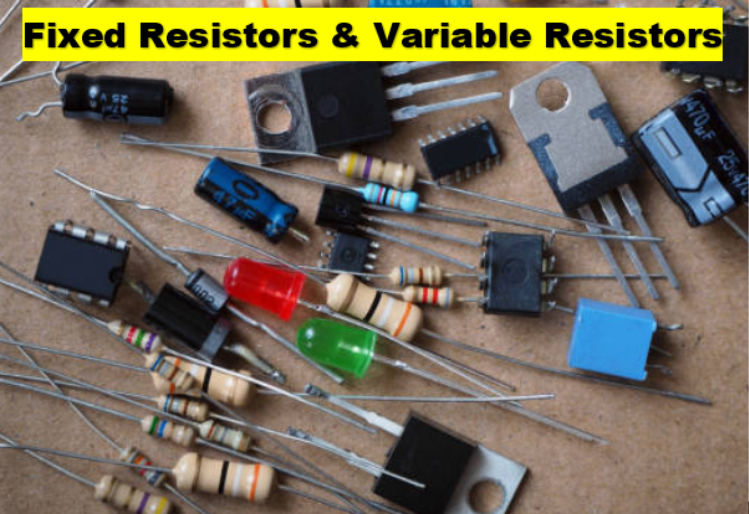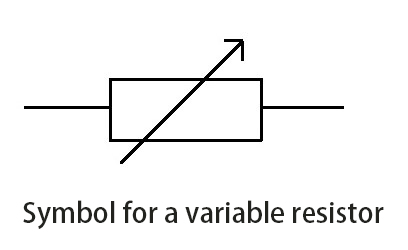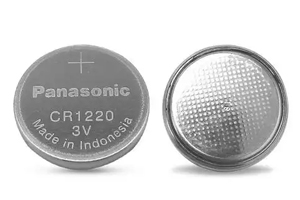Fixed vs Variable Resistors: Differences and When to Use Each
Author:admin Date: 2025-10-09 08:37 Views:180
Introduction
Resistors are electronic components that restrict the flow of current. You will have the option of choosing between fixed or variable resistors. For fixed resistors, their resistor value remains constant, whereas variable resistors allow you to change the resistance depending on the use. So, which one do you pick?
Each type has different applications where it performs better than the other type. Below, we delve deeper into understanding each type and when to choose it for your application.

What are Fixed Resistors

A fixed resistor is an electronic component having a predetermined or constant resistance value. This means it cannot be changed. The work of the fixed resistor is to restrict the flow of current in the circuit based on the specific resistance value, which remains stable throughout its operation.
Types
Different types of fixed resistors can be constructed using different materials. Such include metal film, wire, thick/thin film, and carbon film. The type of material can determine where each type of fixed resistor is best used.
- Carbon film resistors: These are made from a carbon layer deposited on a ceramic substrate. Such resistors are affordable, but may have less accuracy.
- Metal film resistors: These are constructed using a thin metal film deposited on a ceramic substrate. The result is a resistor type with more accuracy and stability than the carbon film resistors.
- Wire-wound resistors: These are made by winding a resistive wire around a ceramic core. We recommend them for high-power applications as they can handle heat better.
- Surface-mount resistors (SMD): Such resistors can be mounted directly on PCBs, which saves space while doing their job correctly.
Applications
Fixed resistors are common in everyday electronics such as computers, phones, TVs, and others. This makes the resistor type suitable for current-limiting and voltage-division applications.
Take LEDs as an example; they can be used with a current-limiting resistor, which prevents too much current from flowing through the resistor, potentially damaging it.
As for voltage dividers, the fixed resistors in series are used to create a voltage divider circuit. This circuit provides a stable lower output voltage when connected to a higher input voltage.
If you are also looking to set up permanent circuits, the fixed resistor is the best as there is no need to change the resistance over time.
Signal processing and conditioning can also be used to modify the input signals to suit the requirements of specific applications. For example, they can be used to adjust an offset or reduce the signal amplitude of a signal.
Timing circuits also use fixed resistors to generate precise oscillations, pulses, and delays.
Advantages
- Wide availability and affordability
- They are reliable and offer stable resistance
- Compact and generally easy to use, even for compact circuits
Limitations
- Fixed resistors in series lack adjustability in their resistance value
- Limited flexibility for testing and turning on circuits
What are Variable Resistors

Variable resistors also work by restricting the flow of current in the circuit, but now you can adjust their resistance values to control how much current or voltage goes through the circuit.
Good examples of such resistors are trimmer resistors, potentiometers, and rheostats. The flexibility of changing the resistance makes them good for testing and tuning circuits.
The variable resistor works by changing the resistance value when you move the resistor wiper across the length of a resistive track.
Types
- Potentiometers: These resistors come with three terminals and have a known or slider for adjusting the resistance in the circuit. They are commonly used for voltage division or volume control.
- Rheostats: These are two-terminal resistors designed for high-power applications. The resistance can be adjusted to control current. Expect to come across it in industrial settings.
- Trimmer resistors: They are smaller multi-turn or single-turn resistors. They are used for servicing or calibration of an electronic circuit.
Applications
The most popular use of the variable resistor is volume control. This includes the use of a potentiometer in audio devices to adjust the audio signal level by simply changing the circuit resistance.
Dimmers also utilize variable resistors to control the brightness of lights, such as bulbs or LEDs.
Trimmer potentiometers can also be good for fine-tuning adjustments during the manufacturing process, especially for calibrating sensors and similar instruments.
You may also come across adjustable power supplies. Yes, you can now regulate the voltage or current at the power supply output.
Testing and prototyping of electronic circuits may require the use of variable resistors. The adjustment enables the circuits to operate within specific parameters, allowing for a targeted output.
Advantages
- They are highly flexible for fine-tuning current and voltage in a circuit.
- Versatility is what makes them have numerous applications.
Limitations
- They are generally bigger and costlier than fixed resistors
- The mechanical parts may degrade and wear over time.
Fixed vs. Variable Resistors: Main Differences
Whether you want resistors in series or parallel, it is important to choose either the fixed or variable resistance. This is what will enable the circuit to function as expected. Below is a table outlining the key differences between fixed and variable resistors that you should be aware of.
| Feature | Fixed resistors | Variable resistors |
| Resistance | Has a constant resistance value | The resistance is adjustable |
| Application | Great for providing consistent resistance in various circuits, such as basic electronic components | Suitable for circuits such as volume control, lamp dimmer, or sensors |
| Cost | Significantly cheaper because of the simple design and construction | It is more expensive than fixed resistors, as it has a more complex adjustable mechanism |
| Complexity | It has a simple and straightforward design | It may be more complex as it features multiple movable mechanisms. |
| Size | It is compact for ease of integration into dense circuits | Generally bigger to accommodate the adjustable mechanism |
| User interaction | No adjustment needed | Can be adjusted manually via a knob, slider, or dial |
How to Choose Between the Fixed and Variable Resistor
- Purpose ( Permanent vs. Adjustable)
This is going to be the most common reason for getting either the fixed or variable resistor.
Fixed resistors are best suited for applications that need a constant resistance value. Examples include a current limiter or a voltage divider. Such offers stability and long-term reliability.
Variable resistors are used in applications that require dynamic resistance adjustment. This ensures that they provide more flexibility when used in a circuit.
- Space Availability
Fixed resistors are less expensive. They are still small in size because of their simpler design. Variable resistors are often cost more and need more space due to the additional mechanical components..
- Long-term Stability
Fixed resistors offer better stability and consistent resistance values over time. This makes them better for various critical applications where precision is important.
The variable resistors may experience a change in resistance over time because of wear and tear of the adjustment mechanism. However, they will be more flexible and adjust the resistance to suit your needs.
Conclusion
By now, you have a good understanding of how the fixed and variable resistors work and compare. So, if you ever have to work on a circuit, you know which one to use for the project. Always buy the resistors from reputable brands to get resistors that deliver optimal performance.
Please send RFQ , we will respond immediately.
Frequently Asked Questions
Can you use a fixed resistor in place of a variable resistor?
Yes. A variable resistor can be used to replace a fixed resistor, provided it is set to the specific resistance value. However, it may not always be an efficient choice as variable resistors are more expensive and bulkier.
Are fixed resistors more durable than variable resistors?
Generally, YES. Since fixed resistors do not have moving mechanical parts, they are more durable and long-lasting in an application.
Do variable resistors affect the stability of a circuit?
Yes, they can. Some variable resistors, after continuous adjustments they experience wear and tear, thus affecting the sensitivity of the circuit. So, for applications that demand precision and consistency, fixed resistors are more ideal.


